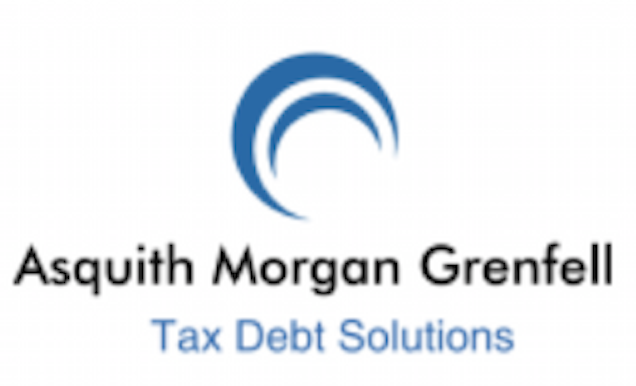Tax Debt Alternatives – Professionals Kit
There are alternatives to bankruptcy, insolvency and debt agreements for your clients.
These materials are specifically designed to assist professionals, lawyers, accountants and financial planners, advising clients with tax and other unsecured debts. The materials are general in nature and each individual’s specific circumstances need to be taken into account.
While these materials are specifically addressing tax debts, a client with tax debt usually has other unsecured debts that usually need to be included in any comprehensive debt resolution. Bankruptcy, Part X arrangements and debt agreements may be suitable depending upon a client’s specific circumstances; there are alternatives that do not involve insolvency for the client.
Bankruptcy is a last resort when all other avenues have been explored. The consequences of bankruptcy are serious. Secured assets are sold, clients’ financial affairs are investigated to ensure preferences have not been given and income above certain limits is payable to the bankruptcy trustee. Credit impairment is lasting and the ability to run a business greatly restricted. In addition the Tax Office can still withhold any tax refunds and offset these against outstanding tax.
Debt agreements generally involve a freeze on creditors fees, charges and interest and a payment plan over 3 – 4 years. Payments are made to an administrator who disburses dividends to the creditors. Debt agreements have a number of limitations. They are only available for total debts under $107,307 and where after tax income is less than $80,480. Both amounts are indexed. Note the ATO can offset any refunds due against tax outstanding even though a debt agreement is in place. A debt agreement is regarded as an act of bankruptcy and is noted the National Personal Insolvency Index.
A Personal Insolvency Agreement (PIA) is a formal agreement binding upon unsecured creditors for a payment plan. No income and debt limits apply. A Trustee administers the client’s financial affairs, for the term of the PIA. The PIA is also an act of bankruptcy and credit records are affected for up to 5 years. Few PIA are done due to their complexity and fact that 75% of creditors must consent to such.
Time is critical
When a client has tax debts, matters can quickly get out of control. Prompt action is needed
Director Penalty Notices must be addressed within 21 days, otherwise the director may face personal liability for a company’s tax debts.
Business viability needs to be immediately assessed with a view to voluntary administration or liquidation.
If the business is viable a deferment or payment plan needs to negotiated.
The director’s personal circumstances and the actual management of the company need to be reviewed, to see if there are any grounds for a defence to the DPN.
The issue of a DPN should be a trigger for a comprehensive review of the company and its operations.
With the pressure of compliance work it is sometimes difficult to drop everything to address a tax debt gone wrong. Usually there are not just tax debts to deal with, but it all hits the wall and other unsecured creditors are all demanding payment at the same time.
Dealing with the ATO and other client creditors is time consuming, complex and frustrating. Often the many hours spent will not be billable.
Professional referrals are our main source of work. We work with you to ensure the best result for your client. Our experience and relationships mean that we know what is possible and how to achieve the best results. You can have confidence that your clients’ will be dealt with ethically and professionally.
Deferrals
Both Federal and State Tax authorities will work through tax issues to resolve any problems. The worst case scenario arises when clients ignore the tax debts and allow interest and penalties to accumulate. With companies this can lead to the issue of Director Penalty Notices and personal liability of the directors for company tax debts.
Deferral arrangements are dependent upon the amount and nature of the tax debt. The ATO has an automated tax payment arrangement for debts under $25,000. The payment plan can be initiated using the calculators and online inputs at the link.
Conditions:
– Tax debt under $25,000
– Repayment must be within 2 years
– All tax filings must be up-to-date
– Client has a good compliance history
The General Interest Charge applies to the outstanding balance.
For ATO debts over $25,000 it is possible to negotiate a deferment or payment plan to deal with short term issues. For small businesses turning over less than $2,000,000 pa interest free payment plans for up to 12 months are available. Interest waiver may also be available for other businesses depending upon their specific circumstances.
The link sets out the information needed to support an application for deferment or a payment plan. The ATO wants to know everything so as to assess whether the problem is short term and deserving of leniency or systemic and structural in which case leniency perversely is unlikely. The ATO wants to know the viability of a business if it is a business tax debt.
The information needed for this is detailed and may not be available. A poorly constructed application is likely to be unsuccessful and a wasted an opportunity.
While a deferment or payment plan is being applied for it is important that enforcement action be put on hold pending the result of the application. If not done enforcement action will continue unabated with the possible issue of garnishees and Director Penalty Notices.
Debt waiver or Reduction
In circumstances where payment of tax debts would cause serious hardship, the ATO may waive the entire debt or partially waive the debt.
Debt waiver is not available for corporations or most trusts.
The application is initiated by filing an Application for release.
The application requires comprehensive financial information and details of the client’s circumstances. Corroborating documents need to included in the application.
An application needs to be prepped in line with the guidelines of what circumstances the ATO will consider. Luxury assets, investment properties and other investments need to have been sold and proceeds traced. Expenses need to be analysed for what the ATO regards as extravagant expenditure.
For example a client with two children at private schools driving a Range Rover and with a holiday home on the coast will not be able to get relief under these provisions. To be considered for relief, the holiday home would need to be sold, a more modest car acquired and the children taken out of private school. The proceeds of sales would need to be traced to show surplus was not being used to give preferences to other creditors.
In preparing an application it is important that every statement can be corroborated from reliable source materials, and that payment of the tax would cause serious financial hardship to the client. The guideline for what the ATO regards as serious hardship are at this link.
Other important factors in a waiver application include:
– whether preference payments have been made to creditors other than the ATO;
– compliance history; &
– whether provision was made for tax liabilities.
An application can be dealt with by:
– full debt waiver;
– partial debt waiver;
– instalments even over a lengthy period; &
– waiver of penalties and or interest.
A thorough preparation of the case is necessary to ensure that the application has integrity and accordingly a high prospect of favourable consideration.
Not all cases are suitable for a waiver application. The client circumstances need to be assessed to see if they fall into this category of relief.
Penalties and Interest
The general interest charge applies on a daily compounding basis. This is a serious tax burden as the rate is set at 7% above the cash rate. An outstanding tax debt can quickly balloon to unmanageable levels.
Situations outside of the control of a client may arise that lead to delay in payment of tax, these may include natural disasters, industrial action, or insolvency of a major debtor. In these type of cases there are grounds for remission of the general interest charge. Generally if the circumstances are fair and reasonable there are also grounds for remission.
Remission of penalties depends upon the nature of the penalties. Failure to lodge penalties and GIC will generally be remitted where it is fair and reasonable to do so. If the penalty is less than $10,000 this can be done by telephone.
Penalties applied to amended assessments, as a result of an audit, raise thorny questions with the safe harbour provisions. If the client basically throws it back onto the professional they may have penalties remitted. The defence is “it wasn’t my fault, I just gave it to my accountant.”
There are a number of other grounds for arguing against these penalties:
– there was reasonable care taken; &
– the law was applied in an accepted way.
Other Solutions
Tax consolidation loans may be available. Rates and terms tend to be more generous than the penalties and General Interest Charge.
If action is taken soon enough credit ratings can be preserved.
Timing is critical.










Most Commented Posts